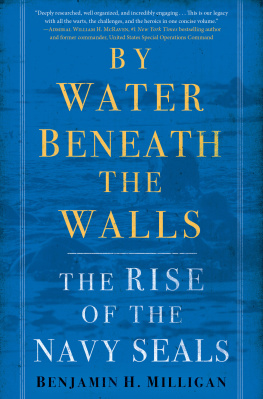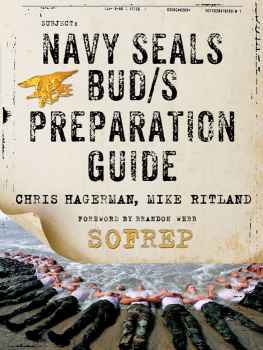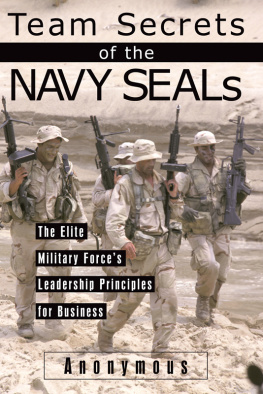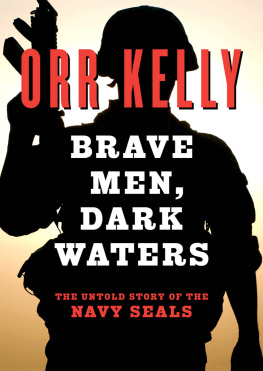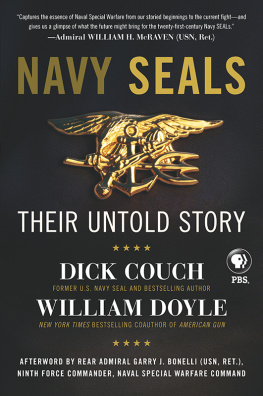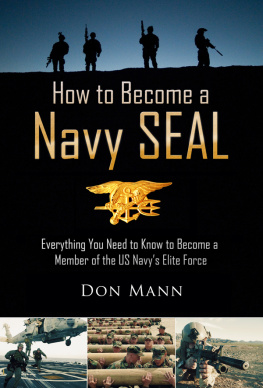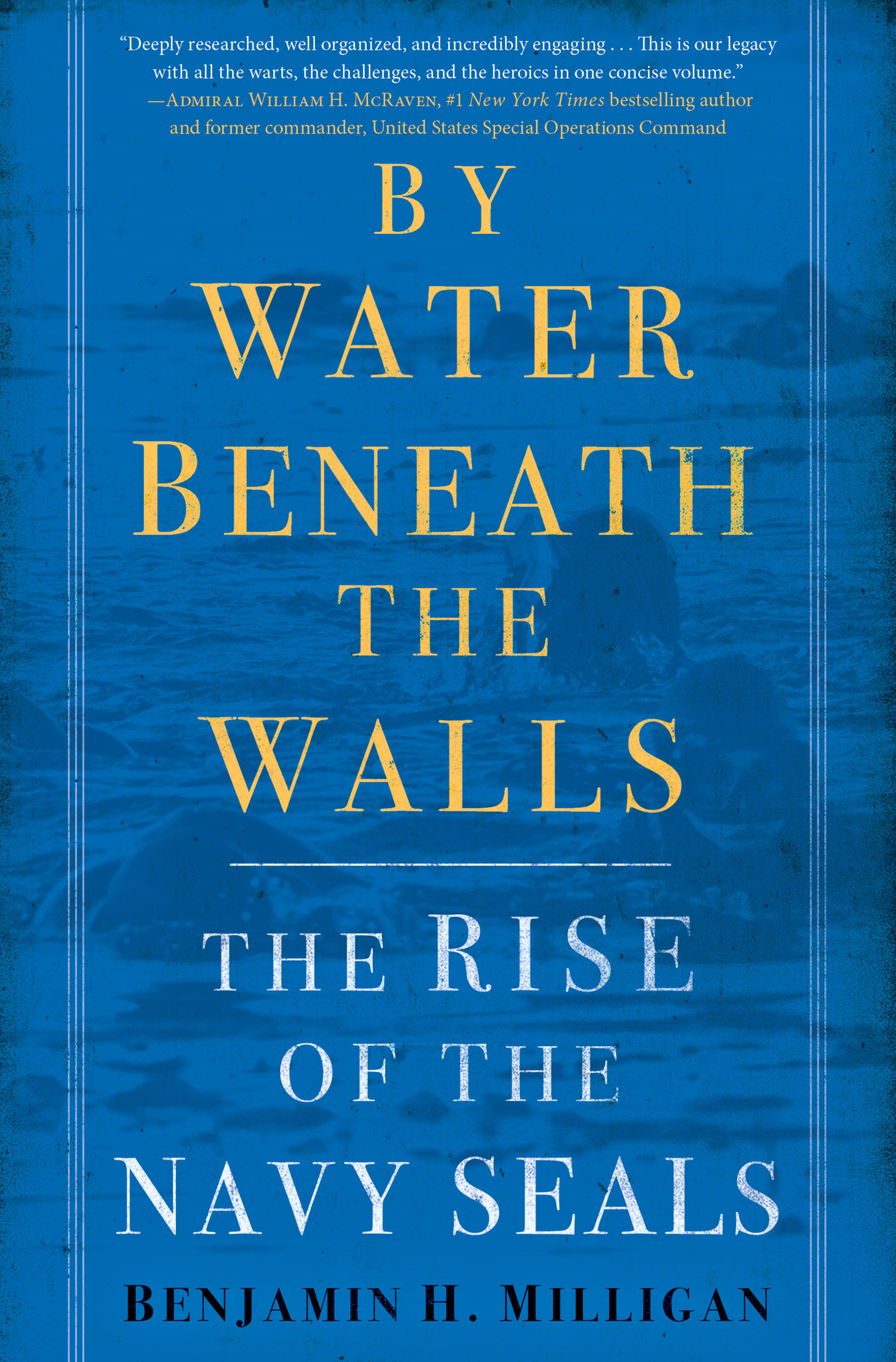Copyright 2021 by Benjamin H. Milligan
All rights reserved.
Published in the United States by Bantam Books, an imprint of Random House, a division of Penguin Random House LLC, New York.
Bantam Books and the House colophon are registered trademarks of Penguin Random House LLC.
Illustration credits are located on .
In 705 CE, after having his kingdom taken away, his nose cut off, and his tongue split, Justinian II sailed across the Black Sea and led a small group of fighters under the impregnable walls of Constantinople by way of an unguarded aqueduct and captured the city. It was a victory that never should have been, by water beneath the walls.
Introduction

A Unit That Should Not Exist
F irst, a disclaimer. This is not an accounting of the modern US Navy SEAL teams. If thats what youre interested in, may I suggest you reach for one of the dozen or so recently published memoirs now crowding bookstore shelves everywhere. Instead, it is an attempt to explain a puzzle that no one ever has: the convulsive history of how and why the least likely branch of service in the US military came to foster the sort of unit it should never have needed; and more, the sort it should never have had the chance to create.
Let me explain.
The fifty-three-week process that creates a Navy SEALan acronym comprising Sea, Air, and Landis essentially broken down into two parts. The first half is called BUD/S, or buds, which stands for Basic Underwater Demolition/SEAL training. It is a title that acts as a salute to the curriculums origins but one so sterile that it also conceals both the courses range and its reputation as the US militarys most notorious meat grinder. Included in this course are all the iconic scenes of arm-linked students awash in frigid surf, of sand-coated faces wrenched beneath the buckling weight of rubber boats or telephone-pole-sized logs, of air-sucking mouths bobbing for breath above wrists and ankles hog-tied with straps. Against a backdrop of surf and sand berms, swimming pools and fire hoses, BUD/S initially unfolds into a series of evolutions intended to test and build a volunteers amphibious capacityunderwater knot-tying, the fifty-meter underwater swim, surf passage, ocean swimming, drownproofing, lifesaving, hydrographic surveying, contour diving, night diving, combat diving, underwater explosives. The crest of this training comes in the form of Hell Week, an almost completely sleepless five-day nightmare of uninterrupted backbreaking, skin-shredding wet and cold so intense that by the end, every candidate is contracted into a shouldered hunch from tendons swollen by shivering. By the end of these crucibles, each trainee has proven themselves as one of the US Navys toughest, most torturously trained special operatorsone of its naked warriors, its combat divers, its frogmenand an expert in all the missions peripheral to the Navys blue-ocean responsibilities: the demolition of underwater obstacles, the reconnaissance of enemy-held beaches, even midnight harbor infiltrations requiring ascent without bubbles beneath the shadow of an enemy ship to plant mines on its hull.
If BUD/S training stopped there, the Navys premier special operations force would be undeniably remarkable but in operational scope not at all so. In other words, the SEALs would simply be a Navy unit capable of operations that extended just beyond the top edge of the surf zone but no farther; an area of responsibility so neatly tucked inside the boundaries of naval warfare that there never wouldve been a need for this book.
Instead, what follows in the final phase of BUD/S and carries on into SQT, or SEAL Qualification Training, is a curriculum more akin to what one would expect for Marines and Army Rangersmarksmanship and weapons training; land navigation, long-distance patrolling; then the tactics of ambushing, counterambushing, close-quarters battle, land warfare, even urban warfare. When married to courses in static-line and free-fall parachuting, it is a litany that enables graduates to perform a range of dry-boot missions entirely divorced from their blue-ocean origins. These missions range from the training of foreign soldiersyes, soldiersto the reconnaissance of enemy-held areas as far inland as mountaintops.
Most important, this training prepares its pupils for a mission that has emerged as the SEALs specialty and carried them into the top rank of the worlds best commandos. That missionas everyone saw with the killing of Usama bin Laden in Abbottabad, Pakistan, a town some 800 miles from the nearest US Navy vesselis the direct-action raid, the capture/kill. It is a mission so far removed from those performed by the Navys original special operators in World War II that a comparable progression might be found only by imagining that the Armys tankers had developed into the US militarys best submariners.
So, how did this happen? How did the US Navy create a unit whose operational center of gravity is not only directed at a mission performed on the 29 percent of the earths surface that its ships cannot touch, but one so fraught with difficulties that most units of the Army and Marine Corpsthe US militarys traditional tenants of its land operationsare not able to perform it with anywhere near the same proficiency?
Most everyone who has ever tried to casually account for the Navys inland creep in special operations has explained it away as simple evolutionessentially, a nearly thoughtless process of natural selection in which the Navy responded to a changing environment by inevitably adapting to new operational opportunities. As I saw firsthand, the problem with that theory is that the US militarys various branchesand no less the US Navyare legendarily hierarchical, thus legendarily stagnant, and thus require more than just a changing environment to turn the steam pistons of inevitability. In other words, these turns are not inevitable; at least not without the backs to crank-start their own evolution in the direction their own brains decide. Which brings us to the next explanation.
Probably to fill the holes in the aforementioned theory, there hasover the yearsdeveloped something of an agreed-upon origin story for the SEALs; a sort of creation myth that attempts to account for the contradiction of the Navys inland adventurism. That story goes something like this: After World War II, the Navys Underwater Demolition Teams, or UDTs, transformed themselves into coastal raiders, prompting an internal grassroots campaign to formally expand the UDTs charter to inland operations, a campaign that was beaten back by a hostile Navythat is, until President Kennedy intervened and ordered the Navy to create commandos capable of operating from the sea, air, and land. Framed like a fistfight between by-the-book bureaucrats and bootstrap-pulling rogues, this is a story that places the responsibility for the SEALs creation and orientation with the SEALs themselves and at the expense of the Navys leadership. How convenient. Never mind the theorys self-congratulatory ring, its also one that collapses the moment you realize that President Kennedys death so soon after the SEALs creation afforded the Navys planners a chance to renege on their infant creation. They didnt. This can mean only two things: first, that the SEALs hadnt simply authored themselves; and second, that the Navys creation and sustaining of them as a land-focused commando unit wasagainst all obvious logicdeliberate.

